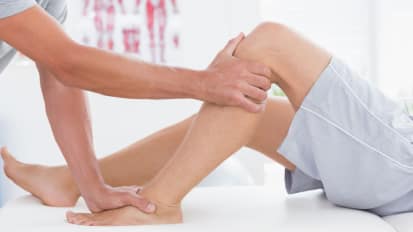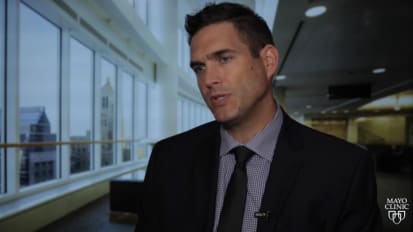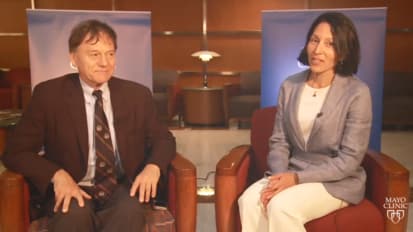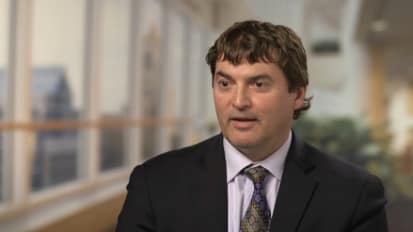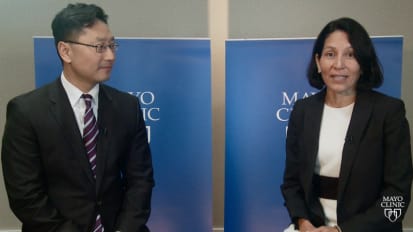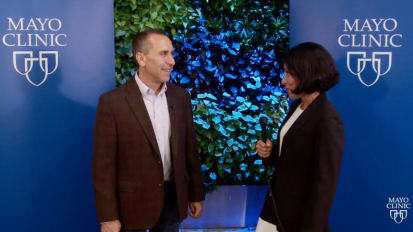Christopher D. Sletten, Ph.D., L.P., clinical psychologist and Comprehensive Pain Rehabilitation Center (PRC) clinical director at Mayo Clinic in Jacksonville, Florida, discusses the program details, what interdisciplinary services are provided, patient population, outcomes and how to refer.
CHRISTOPHER SLETTEN: Hello. My name is Christopher Sletten. I am the clinical director of the Mayo Comprehensive Pain Rehabilitation Program, in Jacksonville, Florida. I'd like to take this opportunity to discuss some of our treatment and clinical options for patients with difficult to manage chronic symptoms. The Pain Rehab Program here in Florida opened in October of 2011. And we now have a capacity to treat 30 patients at a time. This program was based on the original model from Rochester, which has been in existence since 1974. One of the things I'd like you to think about today as we discuss the treatment program is those patients of yours that have been a challenge to manage, you've run out of treatment options, you and your patient are frustrated with what to do next, and you're looking for alternatives to help them manage their symptoms on a long-term basis. Our basic treatment model is based on a cognitive behavior therapy model, with an integrated team approach. The basic components of treatment in our program include physical reconditioning, biofeedback and relaxation strategies, teaching stress management, chemical health, activity moderation, and behavioral interventions for chronic pain. Historically, pain rehabilitation programs have treated individuals with back pain, headaches, musculoskeletal, limb pain, joint pain, abdominal pain. And certainly, those are the patients that we continue to actively treat. The past few years, we've actually broadened our treatment spectrum to include patients with chronic fatigue, non-epileptic spells, movement disorders, multiple chemical sensitivities, and even individuals with chronic GI distress, including cyclic vomiting, dyspepsia et cetera. The program itself is a day treatment program based in the hospital. Patients attend Monday through Friday, 8:00 to 4:30, for three consecutive weeks. This is preceded by an admission day, where the patient is evaluated by all the members of the treatment team. One thing I want to emphasize, for your information, is the fact that we use a multidisciplinary team approach. And in fact, it's very highly interdisciplinary. We use physical therapy, occupational therapy, psychology, nursing, and medical staff in our treatment team. Physical therapy engages in a reconditioning approach that primarily focuses on whole body exercises, stretching, strengthening. But we also minimize and actually de-emphasize the use of modalities and hands-on physical therapy. Occupational therapy employs the use of moderation, modification, and time management, and other strategies, to help the patient engage in a broad range of daily activities. From a psychological perspective, the groups emphasize stress management, behavioral management, cognitive approaches to managing pain, and coping with chronic symptoms. Our medical team includes the RNs and physician's assistants, and physicians. This group of individuals monitor the patient's health status, monitor medication changes, and form the foundation for our medical supervision of our complex patients. Throughout the whole history of pain rehabilitation, we focus on three pillars of treatment. And I've alluded to those briefly. We emphasize medication elimination. Particularly with the strong psychoactive medications, we actively and thoroughly eliminate opiate analgesics, benzodiazepines, sleeping medications, stimulants. We also reduce and eliminate muscle relaxers, anti-inflammatories, and other symptom-managing agents. Our physical therapy regimen includes, as I mentioned, physical reconditioning. And we work with the individuals to change their approach to their chronic symptoms, from one of symptom management to lifestyle management. We have a very active evaluation and admission process. Most of our patients wait a matter of days to a few weeks for admission. We're very keenly interested in getting the appropriate patient into treatment as quickly as possible, since many have been suffering for a great many years. Our outcomes have been well established. The treatment literature for the effectiveness of pain rehab is well established. We have consistently shown a significant decrease in pain scores, depression scores. We've also seen a significant improvement in daily activities and the patient's perception of control over their pain state. Research activities, both here and in Rochester, continue. and the maintenance of these gains is also quite profound. Over 75% of our patients are still showing treatment improvement one year after the program. Additionally, we work very actively to help our patients reduce their reliance on the health care system. We actively educate them about the appropriate use of primary care, de-emphasizing continued utilization of specialty care and symptom management treatment. Finally, what happens after the program, all of our patients are invited to aftercare, which occurs, at this point, on an every other month basis for two hours in an afternoon. And patients are encouraged to return to meet with the staff and other graduates of the program. This time we found to be very clinically effective for the patients to experience support from staff and other graduates, and also somewhat of a refresher course in the principles of pain rehabilitation. Any questions or interest in this program can be directed to the Pain Rehabilitation Center. We are very interested in assisting you and your patients to have them have a better future and a better outcome in dealing with their chronic symptoms. Thank you very much.
